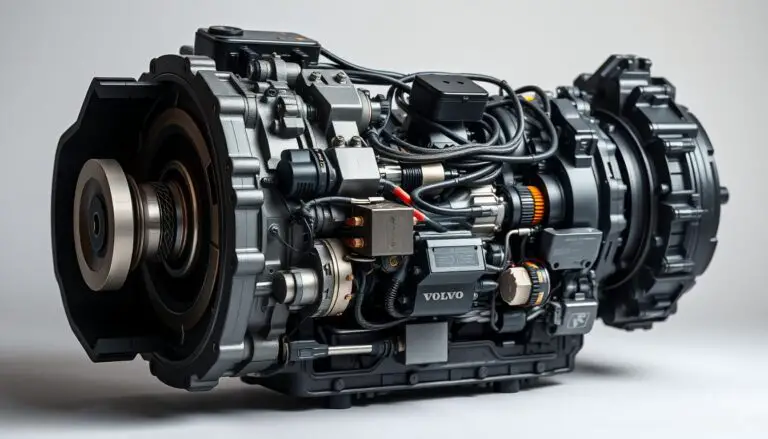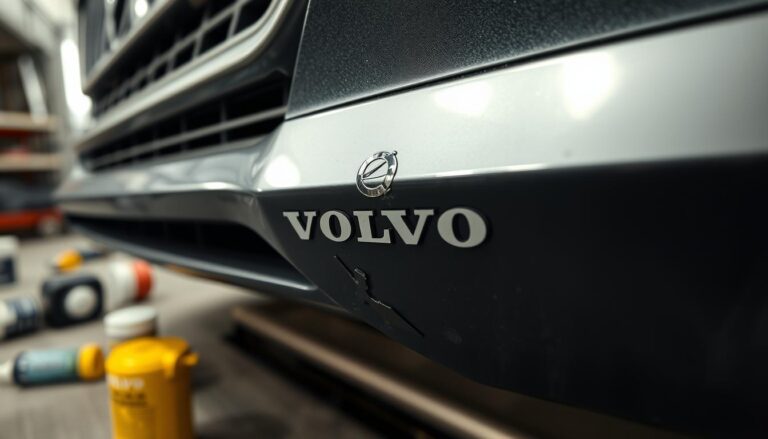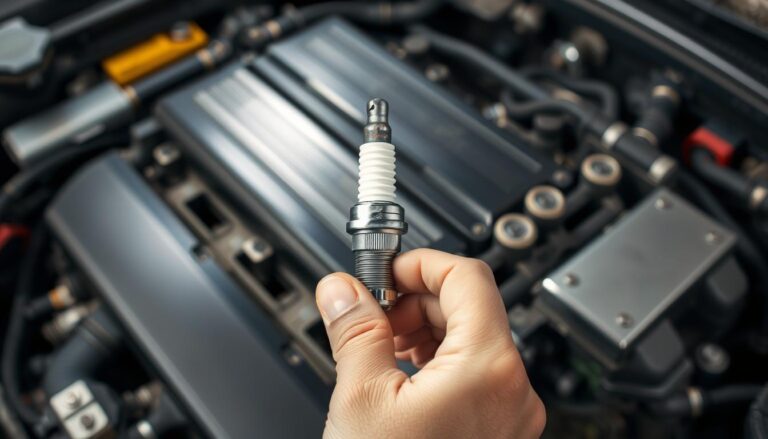Long-lived models from this brand often surprise buyers. Irv Gordon’s 1966 P1800 passed three million miles, thanks to regular oil changes and strict service habits. That record proves careful upkeep can extend a car far beyond typical expectations.
Many drivers report Volvo cars surpassing 200,000 miles when maintained. Dealers and service stations like Gunther Volvo Cars note that routine work and timely repairs help vehicles reach 20+ years of use.
Today’s new models include factory-scheduled maintenance and roadside support, which protect quality from day one. Use the average U.S. annual driving (12,000–15,000 miles) to translate an odometer reading into expected years.
This guide outlines realistic miles-to-years conversions, service-history checks, and signs that signal concern. Focus on documented care and model history rather than a single odometer number.
Key Takeaways
- Careful upkeep can push longevity well past common thresholds.
- Many Volvo cars reach 200,000+ miles with regular service.
- Use annual miles to estimate usable years left for any model.
- Factory maintenance and roadside plans improve early-life protection.
- Check records and station reports like those from Gunther Volvo Cars.
High Mileage on a Volvo, Defined for Today’s Buyers
Many dealers peg 100,000 miles as a typical threshold, yet service history often tells a fuller story.
Practical view: A 100,000-mile Volvo often represents roughly six to eight years of use when drivers average 12,000–15,000 miles per year. That helps shoppers estimate remaining years based on their own habits.
Well-maintained vehicles frequently keep running past 200,000 miles. Regular oil changes, timely repairs, and correct fluids matter more than the odometer alone.
- High odometer readings usually lower price but not always reliability.
- Highway miles tend to be kinder on engines than stop-and-go urban use.
- Compare the odometer with service records to judge likely remaining years.
| Miles | Approx. Years (12k–15k/yr) | Buyer Implication |
|---|---|---|
| 0–60,000 | 0–5 years | Low wear; many warranties active |
| 60,000–100,000 | 5–8 years | Typical used market; check scheduled services |
| 100,000–200,000 | 8–16 years | Inspect history; many models remain reliable |
| 200,000+ | 16+ years | Possible major jobs; strong service records essential |
What Mileage is Considered High for a Volvo? When to Worry
An odometer alone rarely tells the whole story; service records reveal long-term prospects.
Quick thresholds: Dealers commonly mark 100,000 miles as a high point. Yet many Volvos reach 200,000+ miles when properly maintained. The difference almost always comes down to timely oil changes, inspections, and repairs.
Translate miles into usable years
U.S. drivers average about 12,000–15,000 miles per year. Convert an odometer reading to years to estimate remaining use. For example, a 120,000-mile vehicle likely represents eight to ten years of driving for many owners.
Why service history beats the number
Complete service logs—oil, coolant, brake fluid, and scheduled inspections—often predict future reliability better than the odometer. A well-documented Volvo xc60 with 150,000 miles can outlast a gap-filled car at 90,000 miles.
- Prioritize verifiable service over lower numbers without records.
- Ask for timing and transmission work notes at critical intervals.
- Get a pre-purchase inspection to confirm condition and spot leaks or codes.
| Odometer Range | Approx. Years (12k–15k/yr) | Buyer Action |
|---|---|---|
| ~100,000 | 6–8 years | Check full service history; expect some wear items |
| 100,000–200,000 | 8–16 years | Evaluate records; many models remain reliable if maintained |
| 200,000+ | 16+ years | Require strong documentation and inspection; possible major jobs |
Real-World Volvo Longevity: XC60, XC90, S60, XC40 and More
Real ownership data shows certain Volvo models commonly reach well past typical used-car thresholds when service is consistent.
Volvo XC60: The XC60 can last up to about 250,000 miles with proper maintenance. At ~13,000–14,000 miles per year, that often translates to roughly 15–20 years of use. Routine dealer service and genuine parts matter.
XC90 and larger SUVs
The Volvo xc90 and other larger SUV models benefit from strict service intervals. Careful ownership protects engines, transmissions, suspensions, and AWD systems over many miles.
S60 and sedans
The Volvo s60 and similar sedans show long-haul potential when owners use genuine parts and follow scheduled service. That preserves refinement and reliability across key systems.
Compact models and electrified choices
The Volvo xc40 holds up well with regular inspections. For hybrid and plug-in hybrid variants, monitor high-voltage battery health, coolant loops, charging habits, and software updates on the Volvo ex90 and related vehicles.
| Model | Expected Ceiling (miles) | Key Maintenance Focus |
|---|---|---|
| XC60 | ~250,000 | Oil, timing, transmission, genuine parts |
| XC90 | 200,000–250,000+ | Driveline, AWD service, suspension |
| S60 | 180,000–220,000 | Engine tune, fluids, brakes |
| XC40 / EX90 (electrified) | Varies; battery-dependent | Battery health, software, cooling system |
Remember: Volvo’s Guinness record and strong engineering set a durability ceiling. Practical ownership goals focus on consistent service, documented records, and active warranty management—CPO warranty options can add protection as vehicles age.
When to Worry: Signs a High-Mileage Volvo Needs Closer Scrutiny
A careful test drive and paperwork review reveal issues that an odometer can’t show.
Mechanical checks on the road: During a drive, notice powertrain hesitation, rough shifts, misfires, or driveline vibration. These symptoms often signal worn parts that lead to costly repairs.
Brake and steering inspection: Watch for pulsation, squeal, long pedal travel, uneven pull, steering play, or binding. Suspension noises over bumps can point to failing bushings, ball joints, or struts.

Paperwork and diagnostics
Ask for full service records, recall compliance, and documented fluid intervals. A pre-purchase diagnostic scan can reveal stored or pending fault codes and readiness monitor status.
- Check tire tread depth, age codes, and evenness; cupping or inner-edge wear suggests alignment or suspension trouble.
- Inspect air intake, filter integrity, and underhood leaks around cooling, oil, or power steering systems.
- Get a written service estimate for any findings; small issues on an older car can compound quickly.
Tip: For more on expectations when evaluating a high-mileage purchase, see this guide: what to expect when buying a high-mileage.
Certified Pre-Owned vs. Used Volvo: Mileage Caps, Inspections, and Warranties
A certified option gives buyers a known baseline: strict inspection, a mileage limit, and factory-backed care.
Eligibility: Volvo certified pre-owned vehicles must have under 80,000 miles, a clean CARFAX title, and pass a 170+ point factory checklist. Each car is reconditioned and road-tested before sale.
CPO coverage summary
Factory-backed warranty: CPO cars receive a 12-month, unlimited-mile warranty. That coverage kicks in after the original 4-year/50,000-mile new-vehicle warranty expires or from the CPO purchase date, whichever applies.
Value trade-offs
Certified inventory typically costs more than typical used cars. In return, buyers get no-deductible repairs on covered items, transferable coverage, roadside assistance, and a one-year Volvo Cars application subscription.
Work with a reputable dealership team to review inspection reports and compare vehicles side by side. Ask about warranty upgrades and transfer rules to align protection with budget.
| Feature | Certified Pre-Owned | Used (Non-Certified) |
|---|---|---|
| Mileage cap | Under 80,000 miles | No set limit |
| Inspection | 170+ point factory checklist | Varies by seller |
| Warranty | 12-month unlimited-mile factory-backed; transferable; upgradeable | Depends; often limited or none |
| Extras | No-deductible repairs, roadside assistance, Volvo Cars application | Rare; negotiated case-by-case |
Ownership Costs by Mileage: What to Budget as a Volvo Ages
Budgeting for an aging car means planning both routine care and likely mid-life repairs.

Longevity depends on scheduled maintenance: regular oil and filter changes, air filter swaps, tire care, and timely fluid service slow wear and save money over years.
Key service intervals and common wear items past 100k
Expect routine items to recur more often as mileage climbs. A well-documented vehicle usually needs fewer surprise repairs.
- Scale your budget from basic oil and brake fluid work to periodic coolant and transmission attention.
- Common parts that often need replacement after 100,000 miles include brakes, tires, belts, suspension bushings/struts, and engine mounts.
- Age-related decay affects hoses, seals, and gaskets—inspections at each visit catch leaks early.
| Item | Typical Trigger | Why it matters |
|---|---|---|
| Brakes & tires | Wear | Safety and handling |
| Belts & mounts | Age/miles | Prevents breakdowns |
| Fluids & filters | Intervals | Protects gearbox and engine |
Tip: For AWD or hybrid models, factor in specialty fluids and battery checks. Use genuine parts and recommended fluids to keep the vehicle reliable and costs predictable.
How to Shop a High-Mileage Volvo with Confidence
A focused pre-purchase review gives buyers practical leverage during negotiation. Start by gathering service records and noting recent repairs. That context helps decide whether to pursue a purchase, certified pre-owned option, or a new Volvo lease alternative.
Inspection checklist
Look at tires for age codes and tread patterns. Uneven wear can signal alignment or suspension issues.
Check brake feel, pads, and rotors. Test wipers, lights, and weekly fluid levels as dealers recommend.
Inspect air filter, top off fluids, and scan underbody for leaks or rust. A pre-purchase diagnostic will reveal stored codes.
Use a reputable dealership
Seek a franchise dealership for trained technicians, access to service bulletins, and genuine parts. Certified pre-owned units include roadside assistance and the Volvo Cars application for added peace of mind.
Tip: Ask the dealer or station for itemized reconditioning costs. Use those estimates to negotiate the purchase price or request repairs before sale.
“Professional inspections and genuine parts from franchise retailers reduce risk and simplify ownership.”
- Compare new Volvo and pre-owned choices, and consider lease pathways if you prefer lower monthly payments.
- Visit trusted centers like Gunther Volvo Cars or center Volvo dealers with clear inspection reports and center finance support.
- Shop Volvo cars sale inventory by segment—cars Suvs, sedans, and electrified vehicles—to find the right fit.
Conclusion
Balance records and inspection results when judging any used Volvo. A lower odometer does not always equal better condition.
Key takeaway: While many sellers mark 100,000 as a threshold, well-kept cars often pass 200,000 miles. The Volvo xc60 can reach about 250,000 miles with steady maintenance and timely service.
Use CPO coverage and warranty options to reduce risk. Certified units add a 12-month unlimited-mile warranty after the original 4-year/50k term, plus roadside help and app benefits.
Compare models—Volvo xc90, Volvo s60, Volvo xc40 and plug-in hybrid SUV choices—visit gunther Volvo cars or a center Volvo dealership for inspections, reconditioning transparency, and center finance lease or purchase paths. Start with sale new Volvo xc60, sale new Volvo xc90, or a Volvo cars sale listing to begin today.
FAQ
What defines high mileage on a Volvo today?
Today, many buyers view 100,000 miles as the point where a Volvo becomes “high” mileage. That threshold signals potential for more frequent repairs. Still, Volvos properly maintained can surpass 200,000 miles, so service history often matters more than the odometer alone.
How does annual driving in the U.S. affect remaining vehicle years?
Average U.S. drivers log about 12,000–15,000 miles per year. Use that to estimate remaining years: a car at 100,000 miles with a typical lifespan to 250,000 miles could still provide a decade of use if upkeep continues.
Why might maintenance history outweigh the odometer reading?
Regular scheduled service, timely oil changes, and documented repairs reduce wear. A well-kept 150,000-mile Volvo can be a better buy than a neglected 80,000-mile example. Genuine Volvo parts and dealer records boost confidence.
How long can an XC60 last with proper care?
The XC60 commonly reaches roughly 200,000–250,000 miles when owners follow service schedules, replace wear items, and address issues early. Driving style and climate also influence longevity.
Are XC90 SUVs tougher than smaller models?
XC90s are built for heavier use and, with diligent service adherence, often show strong durability. Ownership habits, timely transmission and suspension work, and addressing rust or leaks play large roles.
What about S60 sedans and long-term use?
S60 models hold up well when maintained. Regular fluid changes, brake and suspension upkeep, and using genuine parts help sedans reach high-mile totals without major failures.
What should buyers consider for plug-in hybrids and the EX90 as miles increase?
For electrified Volvos, inspect battery condition, charging history, and software updates. Batteries can degrade, but many retain strong capacity. Verify hybrid-system service and any extended warranty options.
What mechanical signs on a test drive indicate trouble?
Watch for rough idling, hesitation, clutch or transmission shudder, pulling while braking, noises from suspension, uneven tire wear, and delayed steering response. Any dashboard warnings require a diagnostic scan.
Which service records and diagnostics matter most?
Look for consistent oil changes, timing-belt or chain service (if applicable), transmission service, and records of major repairs. A recent OBD-II scan report and full CarFax or AutoCheck add transparency.
What are Volvo CPO eligibility limits and inspection standards?
Volvo Certified Pre-Owned programs often cap eligibility near 80,000 miles and require a clean title plus a multi-point inspection—commonly 170+ points. Meeting those standards grants added warranty protections.
What coverage comes with a Volvo CPO unit?
CPO coverage typically extends a 12-month, unlimited-mile warranty beyond the original new-vehicle protection. Terms vary, so check dealership specifics for exact durations and inclusions.
How do value trade-offs work between CPO and non-CPO used cars?
CPO models cost more upfront but offer inspection-backed condition, warranty, roadside assistance, and often dealer service history. Non-CPO cars may be cheaper but carry higher risk and potential repair costs.
What maintenance costs rise after 100k miles on Volvos?
Expect attention to items like brakes, tires, suspension components, alternators, water pumps, and potentially turbo or high-pressure fuel system parts. Planned timing services and transmission maintenance also add expense.
What should be on a pre-purchase inspection checklist?
Check tires and tread depth, fluid levels and condition, air filters, visible leaks, underbody rust, suspension play, and engine mounts. Verify service records and request a dealer inspection or third-party mechanical review.
Why use a Volvo dealership for inspection or service?
Dealerships employ trained Volvo technicians, use genuine parts, and can access detailed service histories and software updates. That expertise helps identify model-specific issues and preserves resale value.



